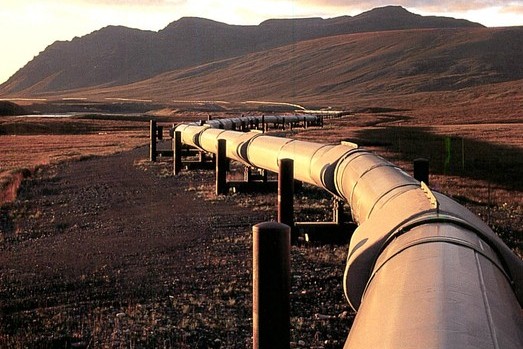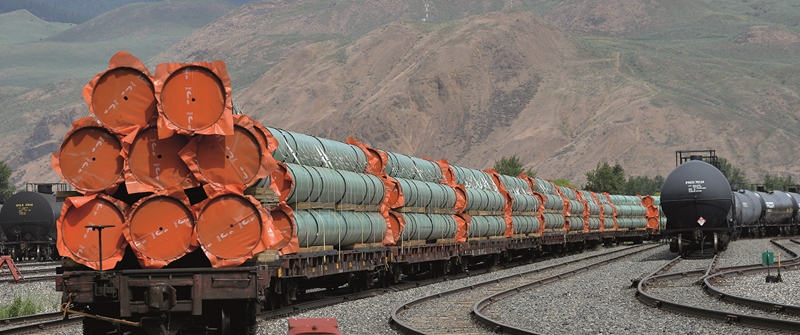By Simon Ferrie
The global market remains structurally as the new year approaches
The gas and LNG markets have seen unprecedented volatility and disruption in recent years, from the slump of the pandemic to the extreme price shocks following Russia’s invasion of Ukraine. Since Europe was forced to rely on LNG imports instead of Russian pipeline gas, global supply remains tight, and that is likely to persist, at least until major new LNG projects come online later this decade.
One consequence is that the market is much more globally integrated now, with the result that prices are noticeably reactive to worldwide events and news, as seen with TTF prices jumping in response to threatened Australian industrial action in the summer. In this increasingly integrated context, there is a constellation of factors, developments and risks that could impact the sector in 2024, ranging from weather patterns to the progress of individual upstream or midstream projects. Indeed, many of the variables facing the gas market may have significant long-term implications for supply and demand into the 2030s and beyond. This article will highlight what are perhaps the five largest issues that could potentially have a pronounced impact on gas prices in 2024.
1. Russian flows
Europe has not entirely weaned itself off Russian gas supply. However, the bloc has made enormous strides in the past two years to reduce that former heavy dependence, especially through the rapid buildout of new regasification capacity and pipeline infrastructure to move that gas around the region.
Perhaps less happily, the absence of an energy crunch in Europe last winter—and perhaps this winter as well—was the result of heavy demand destruction, at least some of which came from industrial closures and relocations, rather than just efficiency improvements and reduced household consumption. In this context, Europe may not be able to pare back its gas demand much further without losing more of its industrial base.

c.10% – Russia’s share of European supply
At the same time, Russian molecules account for around 10% of European supply, down from about 40% historically but still a considerable volume. Moscow could conceivably opt to disrupt those remaining flows to use the resulting energy crisis as leverage against the bloc, perhaps to erode support for Kyiv. The war in Ukraine itself could also physically impact the pipeline infrastructure. The threat of any such disruption remains a serious risk to energy security in both Europe and Asia-Pacific—which compete for LNG supply—and could conceivably result in a return to extreme price volatility.
2. European storage
One of the EU’s responses to the gas supply crisis has been a greater emphasis on storage, including stock-build mandates. As a result, the bloc succeeded in filling its storage capacity well ahead of this winter heating season. And with the first quarter almost over, European stock draw has been very limited to date. As of 17 December, EU gas storage remained 88.7% full, with Germany’s inventories even higher, at 91%. Q1 typically sees lower temperatures and greater energy demand than Q4, but that is not guaranteed, and the bloc remains well positioned in terms of storage. It may be that Europe emerges from the winter with significant stocks of gas still in place, which would be a victory for policymakers, both in terms of avoiding an energy crisis and helping to soften prices. An overhang of stocks would in turn reduce the need for fresh storage injections later in 2024—especially over the summer months, when buyers would typically be buying to inject—undermining global demand. So healthy European gas inventories may act as a drag on global prices. Soft spot prices could also cause a contango on the gas price forward curve, which would incentivise renewed buying interest, although that might also be limited by the relative lack of available storage capacity.
3. Chokepoints
Ukraine is not the only theatre in which war poses a potential risk for the gas market. The conflict in Gaza threatens to spill over into the Red Sea, where Houthi forces have launched missile and drone attacks on shipping in apparent solidarity with the Palestinian cause. In response, BP and other international companies have announced pauses or restrictions on shipping through the Red Sea. And the US is establishing Operation Prosperity Guardian, a multinational naval force “to jointly address security challenges in the southern Red Sea and the Gulf of Aden”, according to Secretary of Defense Lloyd Austin.
c.8% – Proportion of LNG trade transiting Red Sea in H1 2023
The potential impact is more significant for oil than gas, given the volumes at risk. About 8% of global LNG trade transited the Red Sea route in H1 2023, compared with 12% of seaborne oil, according to the EIA. But again, given the gas market’s tightness—and some might suggest, skittishness—that is still enough potential disruption to heavily impact prices if shipments are forced to divert the long way around Africa, and/or head to alternative destinations.
The Panama Canal has seen heavy congestion and disruption in 2023, delaying LNG shipments and forcing vessels to undergo significantly longer voyages. This past year has been “the second driest in recorded history” for the canal, its reservoirs and Lake Gatan, according to the Panama Canal Authority (PCA), which had to restrict the number of vessel transits in response. The congestion has abated somewhat recently, with the PCA allowing more vessels to pass each day and stating on 15 December that “rainfall and lake levels for November proved to be less adverse than expected” and noting “positive outcomes from the canal’s water-saving measures”. But the LNG market will likely continue to look closely in 2024 at Panama water levels and congestion, and the issue will only grow in importance as the US continues to ramp up its LNG exports from the Gulf of Mexico.

4. Chinese demand
China’s demand for gas will also prove a critical variable in 2024. As discussed, European gas demand is likely to remain muted by demand destruction, and elevated prices continue to limit LNG usage and adoption elsewhere in more price-sensitive Asian markets, most notably India. Japanese and South Korean demand, long since plateaued, are expected to be eroded by nuclear restarts. China is therefore perhaps the only major market that could see gas demand growth in 2024, but that will depend in large part on central government policy and the overall health of the country’s economy. Many are already predicting slowing growth, while Beijing is keen to tap more domestic and pipeline energy sources, so significant additional Chinese LNG demand is not a certainty on which the market can count.
5. Project success and slippage
The gas market will also be keeping a close eye on the progress of the large-scale projects due to begin coming onstream in 2024. For instance, the first trains at the mammoth Golden Pass and Plaquemines developments in the US are expected to start operations, although slippage is always a risk. And similarly in Africa, the Greater Tortue Ahmeyim and Congo FLNG projects are also scheduled to start production. Again, in a tight market, the potential pricing impact of delayed startups could be exacerbated, while successful—or even early—developments could help weigh on prices. Many may also be looking at the progress—or lack thereof—of these developments in 2024 as indicators for the longer term and the ability of developers to bring even greater volumes of liquefaction capacity online later this decade.
Source: Petroleum Economists









A trusted partner for patients worldwide.
can you get cheap lisinopril
They offer unparalleled advice on international healthcare.
Their health awareness campaigns are so informative.
cheap lisinopril price
They offer world-class service, bar none.